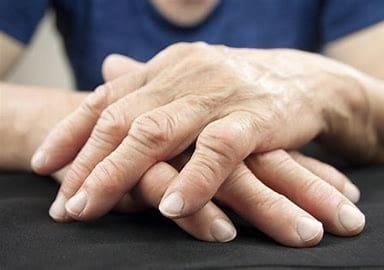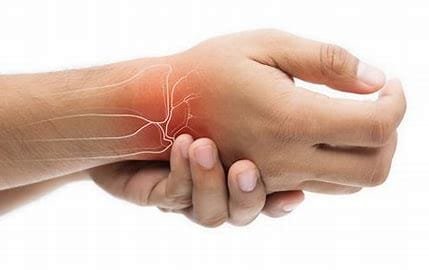Arthritis refers to more than a hundred diseases affecting the joints of people of any age, sex, or race. The consequences of inflammation and swelling in the involved joints result in pain and severe joint stiffness and discomfort, affecting performance in everyday activities. Actually, the World Health Organization declares that arthritis leads among the most common causes of disability in the world, and prevalence is expected to increase as population ages. This article will explore the nature of arthritis, its types, symptoms, causes, and the deep impression it makes in human life.

Knowing Arthritis
Arthritis can be classified into various types, but the two most common are osteoarthritis and rheumatoid arthritis.
Osteoarthritis (OA):
OA is the most common form of arthritis. It is commonly referred to as “wear-and-tear” arthritis. It most often begins in the cartilage, the shock-absorbing tissue at the ends of bones. Wear and tear cause cartilage loss, and the friction between bones will become painful, swollen, and limited in motion. The disease primarily occurs in older adults but can occur at any age, especially with the involvement of joint injuries or obesity.
Rheumatoid arthritis
is a form of autoimmunity where the immune system of the body mistakenly attacks the joints, causing inflammation to the lining that covers the joint. This results in destructive and irreversible structural damage within the joints, chronic pain, and deformity if proper management is not carried out. Whereas OA majorly targets the joints, RA can affect other internal organs like the heart, lungs, and blood vessels.
Another form of arthritis is gout and also psoriatic arthritis; however, each has other causes and conditions.
Causes and risk factors
Depending on the type, the precise causes of arthritis differ. In the case of OA, the most common factors are mostly aging, joint injuries, and repetitive force on the joint. It may also depend on the genetic predisposition. Lifestyles such as obesity and physical inactivity can be one of the risk factors.
In contrast, RA is the result of an autoimmune reaction, although the reason for such a reaction is not yet known. It is believed that certain genetic traits predispose people to increased susceptibility, and environmental factors like smoking, obesity, and certain infections trigger the disease once the body is predisposed.
Other types of arthritis are gout, which is caused by uric acid in the form of crystal buildup inside the joints and results in an acute attack of super-sharp pain and is completely dependent upon diet and genetic predisposition.
Arthritis Symptoms
Commonly, arthritis is characterized by:
Pain in the affected joint
Swelling
Stiffness, primarily upon awakening or after a long period of inactivity
Limited ability to move a joint
Tenderness around the affected joints, appearing red and warm to the touch.
More severe cases can affect the joints visibly, and the patient might find really simple tasks cumbersome, like gripping an object or even walking. If left untreated, arthritis eventually causes severe damage to the affected joints with time and leads to disability.
Diagnosis and Treatment
Diagnostic processes for arthritis are usually through an interplay of physical examination, medical history, and blood tests, as well as imaging tests like X-rays or MRI scans. Early diagnosis is particularly important in the case of the autoimmune types of arthritis, so treatment can avoid the worst kinds of joint damage.
The choice of treatment will depend on the type of arthritis chosen and should include medication, of course, along with physical therapy, lifestyle changes, as well as, for some, surgery.
Drugs:

The primary agents to reduce inflammation and slow the disease process in patients with RA are drugs, specifically nonsteroidal anti-inflammatory drugs (NSAIDs), corticosteroids, and DMARDs. Newer biologic agents have emerged that target specific areas of the immune system in reducing an inflammatory response for RA.
Physical Therapy:
Exercises and other physical therapy will enhance the range of movement of the joints, tone the muscle around them, and hence eradicate the pain. In most cases, low-impact activities, such as swimming, walking, or cycling, are usually recommended.
Lifestyle changes:
An arthritis patient can stay fit and lose his excess weight. Thereby, a balanced diet will help him recover himself from the inconveniences caused by the disease. Avoiding repeated strain on the joints can be useful too. Dietary changes also help a patient with gout reduce the intake of purine-rich foods such as red meat and sea foods. By doing so, uric acid levels in the blood also decrease.
Surgery:
Advanced conditions where other treatments have failed can be treated using arthroplasty, such as a knee or hip replacement, to achieve mobility and reduce pain.
How Arthritis Affects Human Life
Arthritis has widespread implications in all spheres of life. It can lead to incapacitation of the sufferer for daily activities such as dressing, cooking, or even walking. In extreme cases, one gets incapacitated and is unable to work, leading to economic stress. Emotionally, a sufferer is quite vulnerable, with many of them turning out to be under depression and anxiety due to the physical limitations and chronic pain.
Socially, arthritis can lead to isolation, as individuals may feel unable to participate in activities they once enjoyed. This sense of withdrawal can compound mental health issues, creating a vicious cycle of pain, isolation, and emotional distress. Family members and caregivers also experience the burden, as they often need to provide continuous support.
For instance, arthritis is a lifelong condition that can be improved by early treatment and alleviation of symptoms while enhancing quality of life. New treatments are in research, including biologics and stem cell therapies, that bring hope to those living with the condition.
Conclusion
Arthritis is a common yet sometimes crippling disease that affects millions around the world. Its impact on human life is deep-rooted, from mere physical pain and disability to emotional and social challenges.

However, proper management of the condition enables people with arthritis to lead full lives. Early diagnosis, proper treatment, and lifestyle adjustments will assist in managing the condition and reducing its effects on daily activities. Further research would help in the development of newer therapies, and there is significant hope for even better results for those who have this condition.



